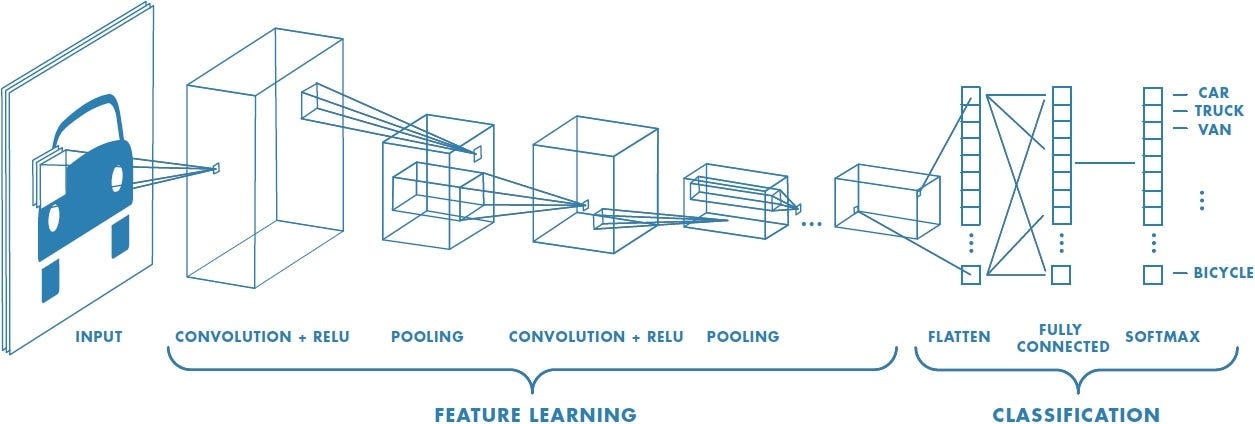What Is the Role of Different Cnn Layers Explained
In The process of building a neural network one of the choices you get to make is what activation function to use in the hidden layer as well as at the output layer of the network. These building blocks are often referred to as the layers in a convolutional neural network.

Role Of Convolutional Layer In Convolutional Neural Networks Vinod Sharma S Blog
It results in 32x32x12 which relates to an unchanged size of the volume.

. This specific region is called local receptive field. Different layers include convolution pooling normalization and much more. It is specially used to apply an activation function elementwise like as max 0 x thresholding at zero.
Why to use Pooling Layers. In neural networks a hidden layer is located between the input and output of the algorithm in which the function applies weights to the inputs and directs them through an activation functionas the output. Thus it reduces the number of parameters to learn and the amount of computation performed in the network.
This article discusses some of the choices. Hidden layers vary depending on the function of the neural network. In short the hidden layers perform nonlinear transformations of the inputs entered into the network.
A basic convolutional neural network can be viewed as a series of convolutional layers followed by an activation function followed by a pooling downscaling layer repeated many times. For example a convolutional layer is usually used in models that are doing work with image data. Pooling layers are used to reduce the dimensions of the feature maps.
This layer is used to perform a downsampling operation along the spatial dimensions width height that results in 16x16x12 volume. The removal of limitations and increase in efficiency for image processing results in a system that is far more effective simpler to trains limited for image processing and natural language. In this section some of the most common types of these layers will be explained in terms of their structure functionality benefits and drawbacks.
The layers of a CNN consist of an input layer an output layer and a hidden layer that includes multiple convolutional layers pooling layers fully connected layers and normalization layers. There are four main operations in a CNN. This layer performs a dot product between two matrices where one matrix is the set of learnable parameters otherwise known as a kernel and the other matrix is the restricted portion of the receptive field.
Normalization layers Why have different types of layers. After that we will apply the Soft-max function to classify an object with probabilistic values 0 and 1. Different layers perform different transformations on their inputs and some layers are better suited for some tasks than others.
With each layer the CNN increases in its complexity identifying greater portions of the image. Convolutional neural networks are built by concatenating individual blocks that achieve different tasks. It carries the main portion of the networks computational load.
Holding the class scores In other words one can understand a CNN architecture to be a specific arrangement of the above-mentioned layers. Local receptive field focusses on the hidden neurons. It provides information from the outside world to the network no.
Elements of a Neural Network -Input Layer - This layer accepts input features. Earlier layers focus on simple features such as colors and edges. Each concurrent layer of a neural network connects some input neurons.
Non Linearity ReLU Pooling or Sub Sampling. The convolution layer is the core building block of the CNN. As the image data progresses through the layers of the CNN it starts to recognize larger elements or shapes of the object until it finally identifies the intended object.
Neurons in a fully connected layer have full connections to all activations in the. A common CNN model architecture is to have a number of convolution and pooling layers stacked one after the other. Convolution layer is the first layer to extract features from an.
Pooling Its function is to progressively reduce the spatial size of the representation to reduce the network complexity and computational cost. Layers are the deep of deep learning. With the repeated combination of these operations the first layer detects simple features such as edges in an image and the second layer begins to detect higher-level features.
CNN utilizes spatial correlations that exist within the input data. In CNN each input image will pass through a sequence of convolution layers along with pooling fully connected layers filters Also known as kernels. The FC is the fully connected layer of neurons at the end of CNN.
We will go through each layer and explore its significance accordingly. As we just discussed the convolutional layers reduce the size of the output. A stack of distinct layers that transform input volume into output volume with the help of a differentiable function is known as CNN Architecture.
Convolutional layers apply a convolution operation to the input passing the result to the next layer. So in cases where we want to increase the size of the output and save the information presented in the corners we can use padding layers where padding helps by adding extra rows and columns on the outer dimension of the images. A pooling layer is another building block of a CNN.
The significance of MaxPool is that it decreases sensitivity to the location of features. Classification Fully Connected Layer The first layer of a Convolutional Neural Network is always a Convolutional Layer.

3 Layer Cnn Architecture Composed By Two Layers Of Convolutional And Download Scientific Diagram

Architecture Of A Convolutional Neural Network Cnn The Traditional Download Scientific Diagram

Understanding Of Convolutional Neural Network Cnn Deep Learning By Prabhu Medium
No comments for "What Is the Role of Different Cnn Layers Explained"
Post a Comment